return size;
}
// 返回链表是否为空
public boolean isempty(){
return size == 0;
}
、、、
}
2、往链表中添加元素
add(int index, e e)函数表示往索引index处添加元素e;其实在链表中一般没有这种需求,我们只是练习用;首先通过一个for循环找到index索引的节点,然后new一个节点插入进去即可;时间复杂度为o(n);
addfirst表示往链表头添加元素,因此时间复杂度为o(1);
addlast表示往链表尾添加元素,因此时间复杂度为o(n);这里注意一下,java的util库中linkedlist往链表尾添加元素的时间复杂度为o(1),因为它是维护了一个双向链表,头节点和尾节点都有记录,直接从尾节点插入一个元素即可,并不需要循环遍历,因此为o(1)的时间复杂度;
// 在链表的index(0-based)位置添加新的元素e
public void add(int index, e e){
if(index < 0 || index > size)
throw new illegalargumentexception(“add failed. illegal index.”);
node prev = dummyhead;
for(int i = 0 ; i < index ; i ++)
prev = prev.next;
prev.next = new node(e, prev.next);
size ++;
}
// 在链表头添加新的元素e
public void addfirst(e e){
add(0, e);
}
// 在链表末尾添加新的元素e
public void addlast(e e){
add(size, e);
}
3、获取链表中的元素
get(int index)表示获取index索引处的元素,跟添加元素类似,也是通过一个for循环找到index位置的节点,然后返回节点中的元素即可;时间复杂度为o(n);
getfirst()表示获取链表头元素,同理也是o(1)时间复杂度;
getlast()表示获取链表尾元素,同理也是o(n)时间复杂度;
// 获得链表的第index(0-based)个位置的元素
// 在链表中不是一个常用的操作
public e get(int index){
if(index < 0 || index >= size)
throw new illegalargumentexception(“get failed. illegal index.”);
node cur = dummyhead.next;
for(int i = 0 ; i < index ; i ++)
cur = cur.next;
return cur.e;
}
// 获得链表的第一个元素
public e getfirst(){
return get(0);
}
// 获得链表的最后一个元素
public e getlast(){
return get(size - 1);
}
4、修改和查找元素
set(int index, e e)表示修改index索引处的元素为e;同理也是通过一个for循环找到index索引对应的node节点,然后修改元素值即可;
contains(e e)返回链表是否存在元素e,通过一个while循环在链表中遍历节点,找到返回true,遍历完仍没找到返回false;
// 修改链表的第index(0-based)个位置的元素为e
// 在链表中不是一个常用的操作
public void set(int index, e e){
if(index < 0 || index >= size)
throw new illegalargumentexception(“set failed. illegal index.”);
node cur = dummyhead.next;
for(int i = 0 ; i < index ; i ++)
cur = cur.next;
cur.e = e;
}
// 查找链表中是否有元素e
public boolean contains(e e){
node cur = dummyhead.next;
while(cur != null){
if(cur.e.equals(e))
return true;
cur = cur.next;
}
return false;
}
5、从链表中删除元素
remove(int index)表示删除index索引处的节点,首先通过一个for循环找到待删除节点,然后将待删除节点的前一个节点的后一个节点指向待删除节点的后一个节点,这样即可删除节点;最后将删除节点的下一个节点指向null,便于垃圾回收;
removefirst()表示删除链表头节点,时间复杂度为o(1);
removelast()表示删除链表尾节点,时间复杂度为o(n);
removeelement(e e)表示删除元素e对应的节点,跟查找结点一样,首先通过while循环找到此节点,然后跟remove函数一样操作即可删除节点;
// 从链表中删除index(0-based)位置的元素, 返回删除的元素
// 在链表中不是一个常用的操作
public e remove(int index){
if(index < 0 || index >= size)
throw new illegalargumentexception(“remove failed. index is illegal.”);
node prev = dummyhead;
for(int i = 0 ; i < index ; i ++)
prev = prev.next;
node deletenode = prev.next;
prev.next = deletenode.next;
deletenode.next = null;
size --;
return deletenode.e;
}
// 从链表中删除第一个元素, 返回删除的元素
public e removefirst(){
return remove(0);
}
// 从链表中删除最后一个元素, 返回删除的元素
public e removelast(){
return remove(size - 1);
}
// 从链表中删除元素e
public void removeelement(e e){
node prev = dummyhead;
while(prev.next != null){
if(prev.next.e.equals(e))
break;
prev = prev.next;
}
if(prev.next != null){
node delnode = prev.next;
prev.next = delnode.next;
delnode.next = null;
size --;
}
}
6、tostring函数打印链表
重写tostring函数用于查看链表信息;
我们通过stringbuilder依次拼接链表节点值,最后转换为string返回;
@override
public string tostring(){
stringbuilder res = new stringbuilder();
node cur = dummyhead.next;
while(cur != null){
res.append(cur + “->”);
cur = cur.next;
}
res.append(“null”);
return res.tostring();
}
7、linkedlist完整代码如下
public class linkedlist {
private class node{
public e e;
public node next;
public node(e e, node next){
this.e = e;
this.next = next;
}
public node(e e){
this(e, null);
}
public node(){
自我介绍一下,小编13年上海交大毕业,曾经在小公司待过,也去过华为、oppo等大厂,18年进入阿里一直到现在。
深知大多数初中级安卓工程师,想要提升技能,往往是自己摸索成长,但自己不成体系的自学效果低效又漫长,而且极易碰到天花板技术停滞不前!
因此收集整理了一份《2024年最新android移动开发全套学习资料》送给大家,初衷也很简单,就是希望能够帮助到想自学提升又不知道该从何学起的朋友,同时减轻大家的负担。
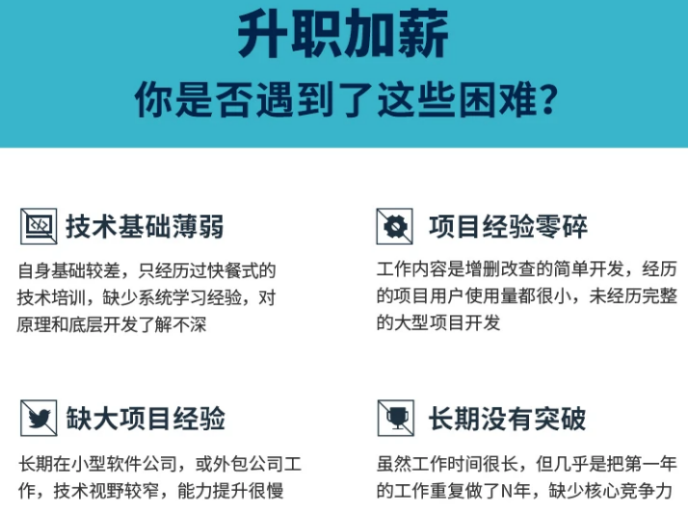
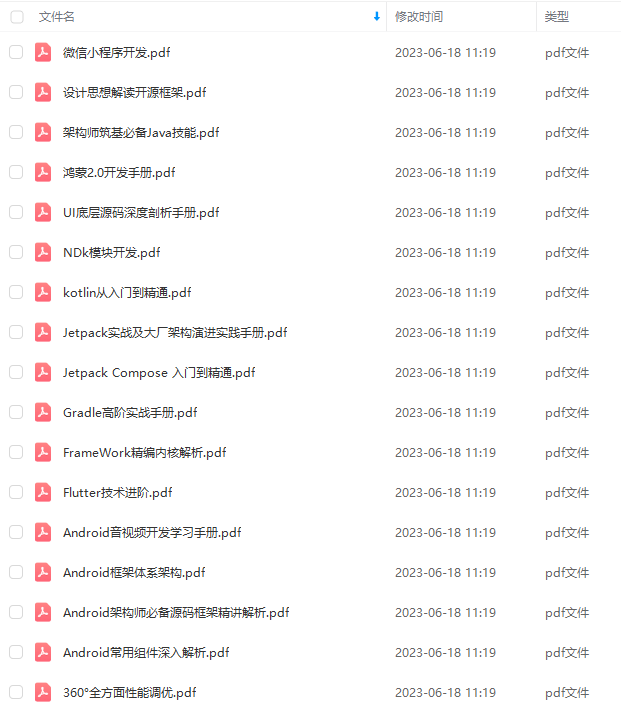
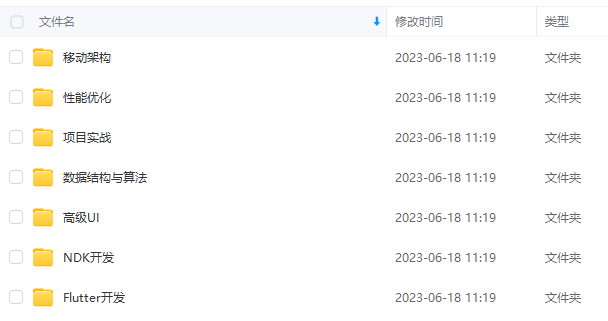
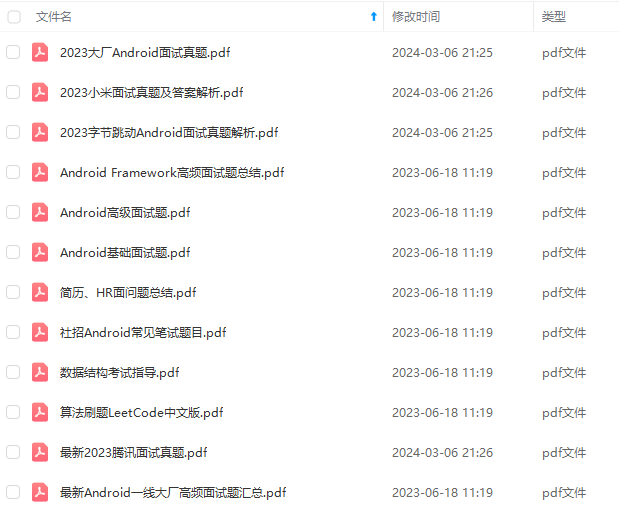
由于文件比较大,这里只是将部分目录截图出来,每个节点里面都包含大厂面经、学习笔记、源码讲义、实战项目、讲解视频
如果你觉得这些内容对你有帮助,可以添加下面v无偿领取!(备注android)

最后
代码真的是重质不重量,质量高的代码,是当前代码界提倡的,当然写出高质量的代码肯定需要一个相当高的专业素养,这需要在日常的代码书写中逐渐去吸收掌握,谁不是每天都在学习呀,目的还不是为了一个,为实现某个功能写出高质量的代码。
所以,长征路还长,大家还是好好地做个务实的程序员吧。
最后,小编这里有一系列android提升学习资料,有兴趣的小伙伴们可以来看下哦~
倡的,当然写出高质量的代码肯定需要一个相当高的专业素养,这需要在日常的代码书写中逐渐去吸收掌握,谁不是每天都在学习呀,目的还不是为了一个,为实现某个功能写出高质量的代码。**
所以,长征路还长,大家还是好好地做个务实的程序员吧。
最后,小编这里有一系列android提升学习资料,有兴趣的小伙伴们可以来看下哦~



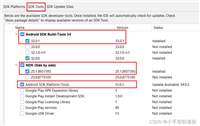
发表评论